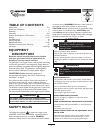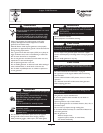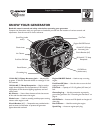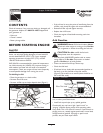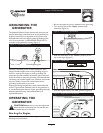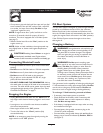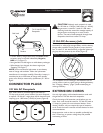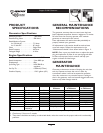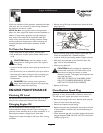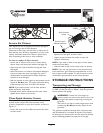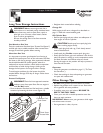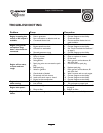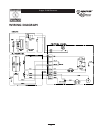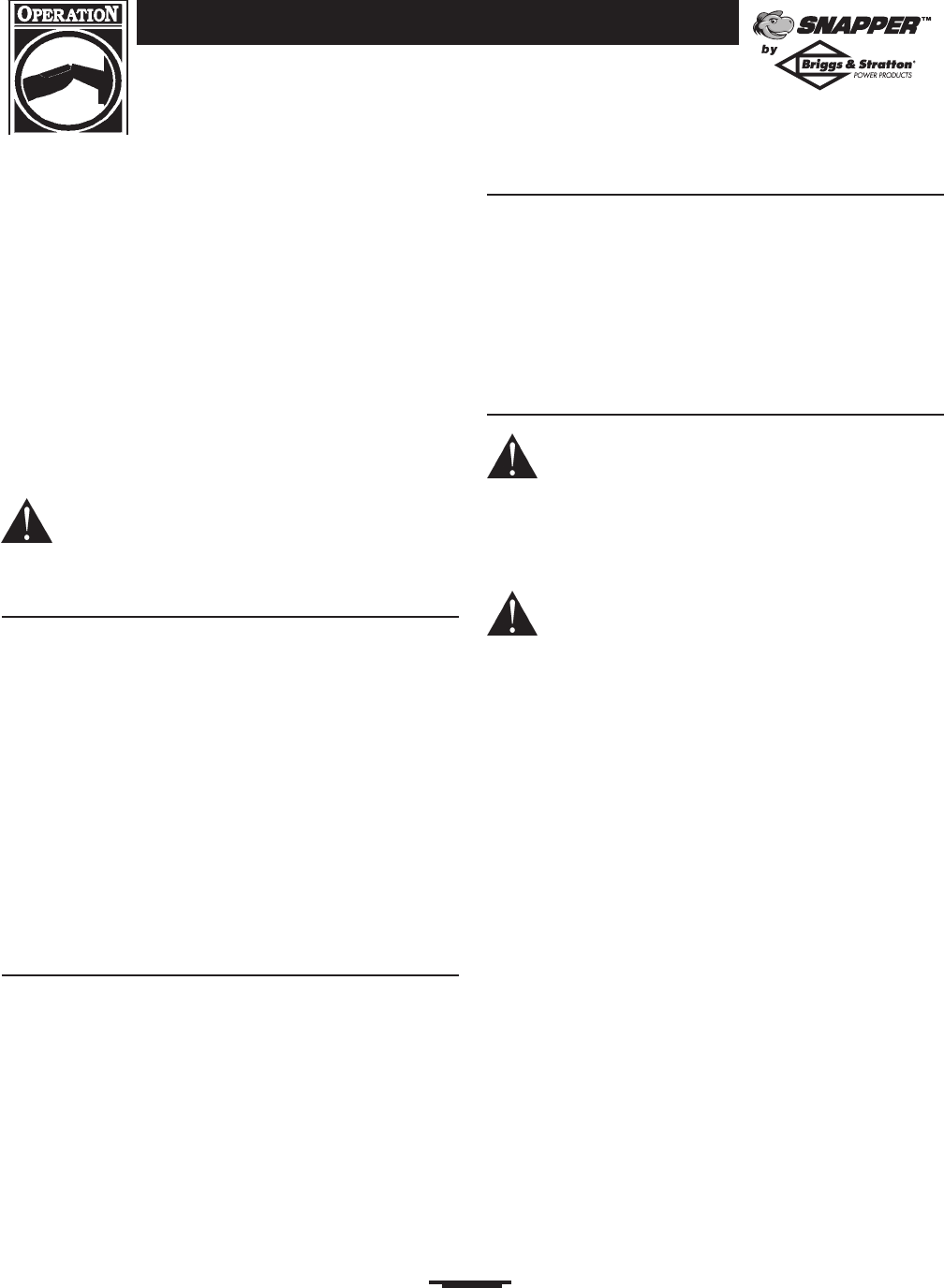
7
Snapper G1000 Generator
• Grasp starter grip and slowly pull the rope until you feel
some resistance, then pull the cord out with a rapid full
arm stroke. Let rope return slowly. Do Not let rope
“snap back” against the unit.
NOTE: If engine starts after 3 pulls, but fails to run for
more than 10 seconds, check for proper oil level in
crankcase. This unit is equipped with a Oil Alert System
(see page 7).
• Slide the choke lever left to the “Run” position as the
engine warms up.
NOTE: Under no load conditions, the engine speed may
vary slightly faster or slower until engine temperatures
stabilize.
CAUTION! Breathing Hazard! Never run engine in
enclosed poorly ventilated areas. Engine exhaust
contains carbon monoxide, an odorless and deadly gas.
Connecting Electrical Loads
• Let engine stabilize and warm up for a few minutes after
starting.
• Do Not connect 240 Volt loads to 120 Volt receptacles.
• Do Not connect 3–phase loads to the generator.
• Do Not connect 50 Hz loads to the generator.
• Plug in and turn on the desired 120 Volt AC, single
phase, 60 Hertz electrical loads.
• DO NOT OVERLOAD THE GENERATOR. Add up
the rated watts (or amps) of all loads to be connected at
one time. This total should not be greater than the rated
wattage/amperage capacity of the generator. See “Don’t
Overload the Generator” on page 9.
Stopping the Engine
• Unplug all electrical loads from the unit. Never start or
stop engine with electrical devices plugged in and turned
on.
• Let engine run at no–load for two minutes to stabilize
the internal temperatures.
• Move engine switch to the “Off” position.
• Turn the fuel valve to the “Close” position (fully
counterclockwise).
NOTE: In an emergency, stop the engine by moving the
engine switch to the “Off” position.
Oil Alert System
The Oil Alert System is designed to prevent engine damage
caused by an insufficient amount of oil in the crankcase.
Before the oil level in the crankcase can fall below a safe
limit, the Oil Alert System will automatically shut down the
engine (the engine switch will remain in the “On” position).
If the Oil Alert System causes the engine to shut down,
add engine oil.
Charging a Battery
WARNING! Storage batteries emit explosive gas
while charging that remains around a battery for a
long time after it has been charged. The slightest
spark can ignite the gas, causing an explosion that
can shatter the battery and cause blindness or
other injury.
WARNING! Do Not permit smoking, open
flame, sparks or any other source of heat around a
battery. Do Not use a lighter or other flame for
checking battery fluid levels. Wear protective
goggles, rubber apron and rubber gloves when
working around a battery. Battery electrolyte fluid is
an extremely caustic sulfuric acid solution that can
cause severe burns. Do Not permit fluid contact
with eyes, skin, clothing, etc. If spill occurs, flush
area with clear water immediately.
Your generator has the capability of recharging a discharged
12 Volt automotive or utility style storage battery. Do Not
use the unit to charge any 6 Volt batteries. Do Not use
the unit to crank an engine having a discharged battery.
To recharge 12 Volt batteries, proceed as follows:
• If necessary, clean battery posts or terminals.
• Check fluid level in all battery cells. If necessary, add
ONLY distilled water to cover separators in battery
cells. Do Not use tap water.
• If the battery is equipped with vent caps, make sure they
are installed and are tight.
• Connect battery charge cable connector plug to the
12 Volt DC panel receptacle.
• Connect battery charge cable clamp with red handle to
battery post or terminal indicated by Positive, POS or
(+) (Figure 7).




